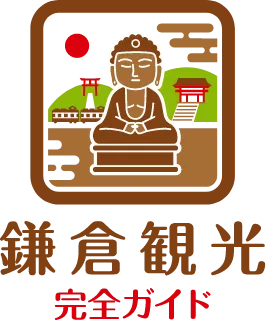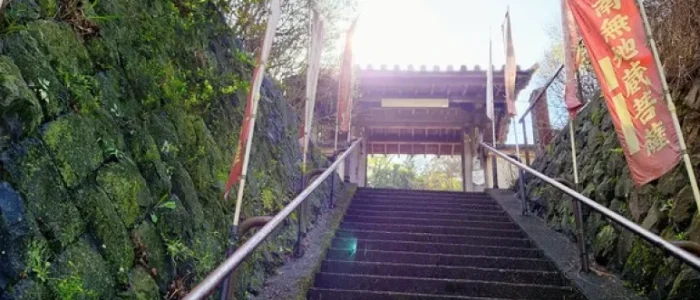Enno-ji Temple (円応寺)
Discover Enno-ji Temple (円応寺)
Enno-ji Temple, founded in the mid-13th century, is a rare site in Kamakura dedicated to beliefs surrounding the afterlife. Originally built near the Great Buddha of Kamakura (鎌倉大仏), it was later relocated to the banks of the Namerigawa River (滑川) in Yuigahama (由比ヶ浜) after the fall of the Kamakura Shogunate, and finally moved to its present location in Yamanouchi (山ノ内, 北鎌倉) following the devastating earthquake and tsunami of the early 18th century. A legend also connects Ashikaga Takauji (足利尊氏), the first shogun of the Muromachi Shogunate, to its reconstruction.
Unique Features and Spiritual Landscape
The temple’s main hall houses awe-inspiring statues of Enma (閻魔大王), the King of Hell, surrounded by the Ten Kings (十王), demon attendants (鬼卒), and guardian deities such as Koshōjin (倶生神). The dramatic space evokes a three-dimensional hell scroll rarely seen elsewhere. Seasonal elements like the fresh green leaves in spring, modest hydrangea blossoms in June, fiery autumn foliage, and the gentle fragrance of fragrant olives (金木犀) in late September offer a multi-sensory experience. Though the hydrangeas are fewer than at more famous spots like Hase-dera Temple (長谷寺), their subtle presence adds to the temple’s charm.
Cultural Significance and Blessings
Despite his fearsome appearance, Enma (閻魔大王) is said to be a manifestation of Jizo Bosatsu (地蔵菩薩), who took on the role of judge to save the souls of the dead. Stories of him saving children from tsunamis have earned him the nickname “Child-Protecting Enma,” attracting families praying for newborn blessings. The temple speaks deeply to Japan’s view of life and death, merging reverence with quiet compassion.
Unique Practices and Offerings
Visitors can recite the Buddhist confession verse “Gashaku Shozo Sho Aku Go (我昔所造諸悪業)” three times, a ritual believed to bring forgiveness for one’s wrongdoings. This passage is printed in the temple brochure. The practice offers a window into Japan’s traditional beliefs about repentance and remembrance.
How to Get There from Tosh’s Place (トシズプレイス)
The temple is about a 15-minute walk from Kita-Kamakura Station (北鎌倉駅), or just 1–2 minutes on foot from the “Kencho-ji” bus stop after riding the Enoden Bus from Kamakura Station (鎌倉駅). Note that you’ll need to climb a slightly steep staircase from Kamakura Kaido Road (鎌倉街道) to reach the gate. The temple is open from 9:00 to 16:00 (March to November) and from 9:00 to 15:30 (December to February). Admission is ¥200. There is no on-site parking, so please use paid parking nearby if coming by car.
Best Seasons and Times to Visit
From spring’s vibrant foliage to the golden blossoms and scent of fragrant olives (金木犀) in early autumn, the temple offers seasonal charms throughout the year. Early morning is ideal for peaceful exploration, offering time to reflect and observe the statues in silence. This is a destination best suited for thoughtful visits rather than rushed sightseeing.
Nearby Attractions to Explore
Directly across from the temple stands Kencho-ji Temple (建長寺), Japan’s oldest Zen temple. Experiencing the contrast between Zen Buddhism and afterlife beliefs in a single walkable area is deeply rewarding. Also nearby are Tokei-ji Temple (東慶寺) and Jochi-ji Temple (浄智寺), offering a peaceful temple-hopping route through Kita-Kamakura (北鎌倉).
Who Should Visit?
- Those fascinated by Buddhist art and statues
- Visitors seeking a quiet, contemplative space
- Anyone interested in Japanese views on life and death
- Families wishing to pray for a child’s naming or well-being
- Travelers who prefer to avoid crowds and move at their own pace
By staying at Tosh’s Place (トシズプレイス), a kitchen-equipped, self-service accommodation, you can visit right at opening time and enjoy a peaceful, undisturbed morning. This flexible style makes the most of your quiet moments in Kamakura.
Wrap-Up: Enno-ji’s Teachings and the Freedom of Staying at Tosh’s Place
Enno-ji Temple offers a rare chance to explore Japanese beliefs about death, compassion, and rebirth through powerful imagery and seasonal beauty. The setting transcends sightseeing, inviting mindful reflection. With Tosh’s Place (トシズプレイス) as your base, you can enjoy early morning serenity and a truly memorable encounter—on your own terms. sacred space. Whether you’re traveling solo or with family, this encounter with Japan’s vision of the afterlife will leave a lasting impression.

